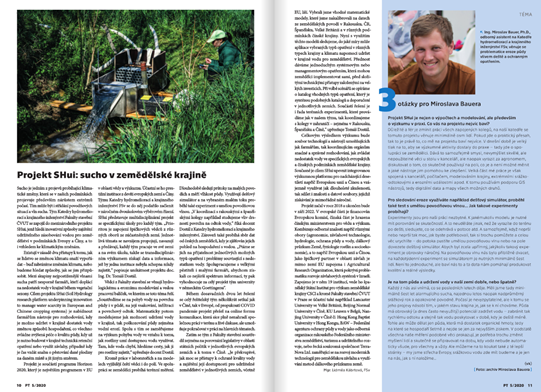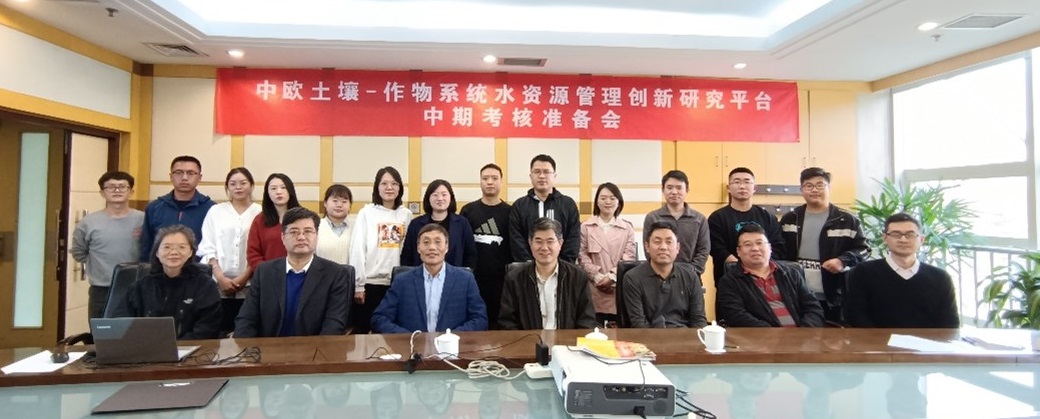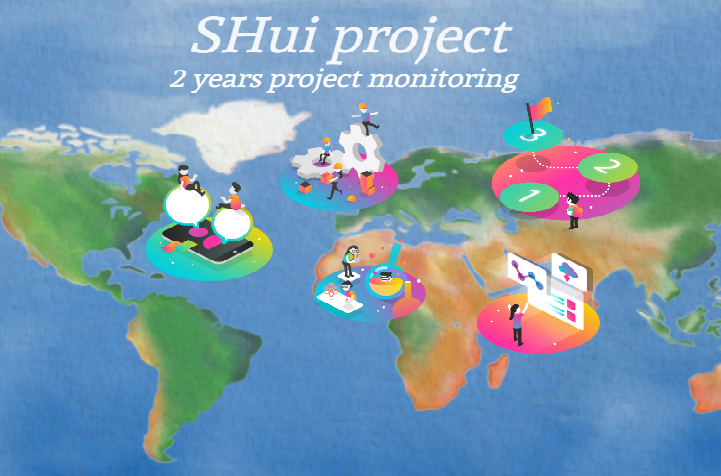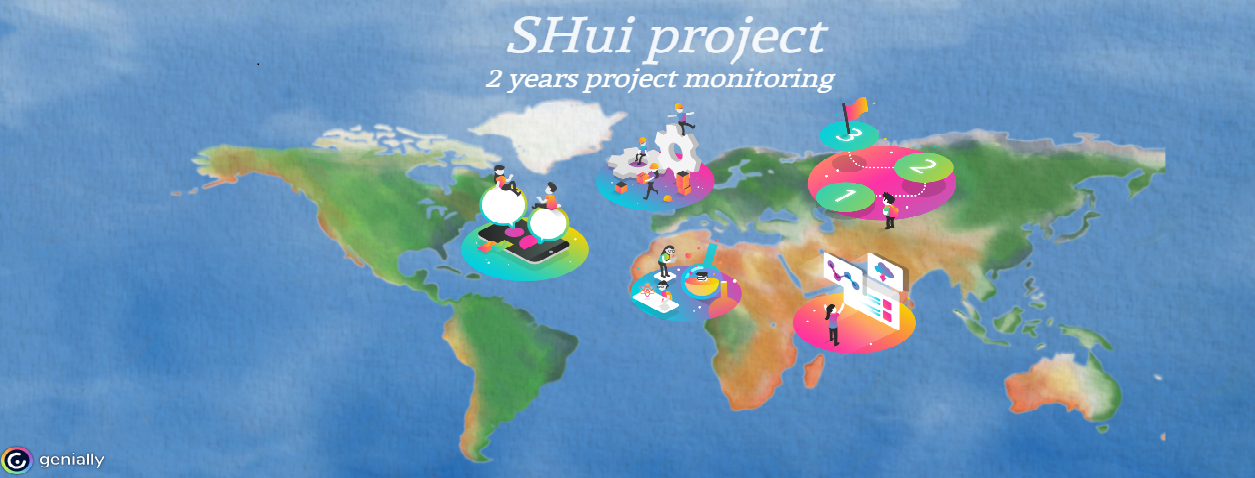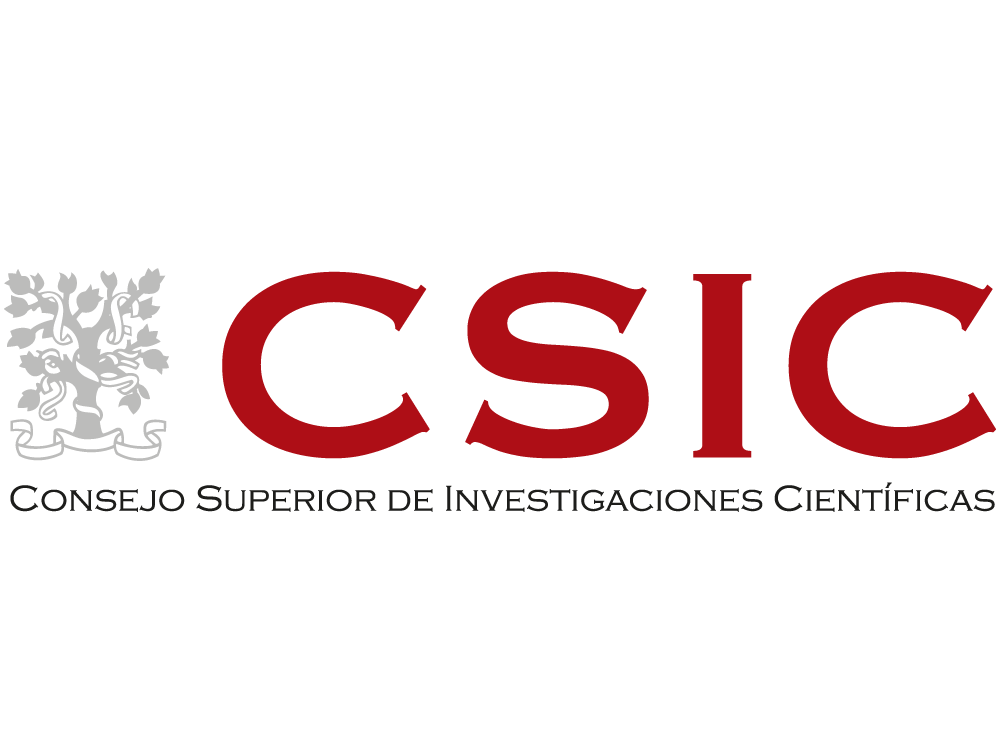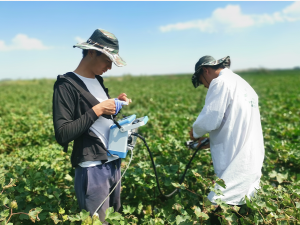Author: Ana
中欧土壤-作物系统水资源管理创新研究平台
The China-EU Soil-Crop System Water Resources Management Innovation Research Platform held its mid-term assessment preparation meeting in Beijing On November 15, 2020.
The meeting was attended by Chinese participants in the SHUI project, including Northwest A&F University, China Agricultural University, Yangtze River Academy of Sciences of the Ministry of Water Resources, Beijing Normal University, Hong Kong Baptist University, Nanjing Agricultural University, Beijing Forestry University and Fujian A&F University. The meeting was chaired by Professor Xu Weifeng, the project leader, and attended by academician Kang Shaozhong of China Agricultural University, Professor Bi Huaxing of Beijing Forestry University and Professor Wu Jianjun of Beijing Normal University as advisory experts.
During the meeting, the subject leaders discussed the completion of the project and the project common experiment. At the meeting, the experts evaluated the completion of each project. By comparing the initial goals, the project has reached the requirements of the mid-term assessment. The experts first affirmed the achievements of the work of the various units, further stressed the necessity for the SHui project to strengthen Sino-foreign cooperation and encouraged active communication and exchange on the project’s common experiment. In addition, the experts mentioned that a major focus of the SHui project should be to increase consideration of the water management platform developed to meet the application needs of farmers in actual production.
SHUI项目委员会会议
27th-28th October 2020
Braving local lockdowns, Tier 3 restrictions and soaring coronavirus infection rates (Belgium being the highest in EU, 2,801.59 cases per 100,000 people), SHui’s researchers gathered on a new online platform (CSIC’s CONECTA) to discuss recent progress and collaborations with SHui. Despite the challenges of the summer, a number of high points emerged from the discussions:
- Chinese researchers are now able to conduct face-to-face focus groups with farmers
- BOKU outlined database visualisation plans to enhance user friendliness
- Interactions between crop / landscape models with remote sensing inputs
- Recruitment of a “front-end specialist” by ARO to ensure Decision Support tools are farmer-accessible
- Recruitment of a new Community Manager to enhance our stakeholder engagement
SHui partners also participated in an interactive survey to identify a way forward for SHui farmer engagement.
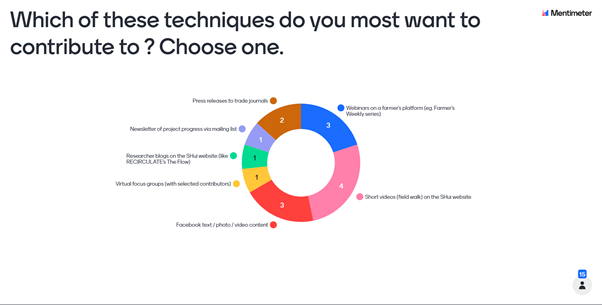
捷克新闻媒体对SHUI进行报道
METRIC-GIS:一种先进的能量平衡模型,用于在GIS环境下计算作物蒸散量
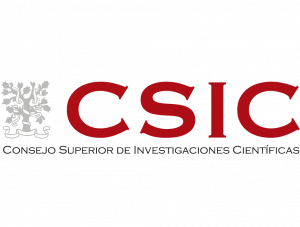
Environmental Modelling and Software 131 (2020) 104770
https://doi.org/10.1016/j.envsoft.2020.104770
Published by CEBAS-CSIC:
J.M. Ramírez-Cuesta a,*, R.G. Allen b, D.S. Intrigliolo a, A. Kilic c, C.W. Robison b, R. Trezza b, C. Santos d, I.J. Lorite d
a Dpto. Riego, Centro de Edafología y Biología Aplicada del Segura (CEBAS-CSIC), P.O. Box 164, 30100, Murcia, Spain
b University of Idaho, Kimberly Research Center, Kimberly, ID, 83341, USA
c University of Nebraska-Lincoln, Lincoln, NE, 68583-0973, USA
d IFAPA, Centro “Alameda del Obispo”, Alameda del Obispo s/n, Post office box: 3092, 14080, Cordoba, Spain
Abstract
A novel ArcGIS toolbox that applies the Mapping Evapotranspiration with Internalized Calibration model was developed and tested in a semi-arid environment. The tool, named METRIC-GIS, facilitates the pre-processing operations and the automatic identification of potential calibration and pixels review. The energy balance components obtained from METRIC-GIS were contrasted with those from the original METRIC version (R2 = 1; RMSE = 0 W m−2 or mm day−1 for ETc) Additionally, an irrigated scheme located at southern Spain was considered for assessing Kc variability in the maize fields with METRIC-GIS. The identified spatial variability was mainly due to differences in irrigation regimes, crop management practices, and planting and harvesting dates. This information is critical for developing irrigation advisory strategies that contribute to the area sustainability. The developed tool facilitates data input introduction and reduces computational time by up to 50%, providing a more user-friendly alternative to other existing platforms that use METRIC.
SHui网络研讨会-“系统思维-农场评价的介绍”
With this webinar Dr.s Plaas and Bergmann introduce the approach of systems dynamics to analyse real world water-related problems. The background of the method is explained and discussed. The challenges and obstacles to solve real world problems are presented with some examples. This is followed by an introduction into how to evaluate and valuate the trade-offs between current agricultural production systems and future ones. The overall seminar ends with discussion points on how to go forward with research and methods.
The room: https://meet.gwdg.de/b/hol-kfm-g23
The code to attend the meeting: 579493
The date and time: 28th of September 2020, 11 o’clock (European time) = 10 am BST
Dr Holger Bergmann is a lecturer at Göttingen University in the Department for Agricultural Economics and Rural Development.
Dr Elke Plaas is a research fellow at Göttingen University in the Centre for Biodiversity and Sustainable Land Use and at the Department for Agricultural Economics and Rural Development. Dr. Plaas’ main areas of work are: socio-economic assessment of soil biodiversity, agricultural policy and environmental economic issues in CEEC and China, agricultural markets, individual farm analysis of farms, bioenergy and rural development.
2020年9月CAU新闻
The research activities in the first half of 2020 were greatly affected by COVID-19 in China. Since May, with the epidemic under control, research activities were released gradually.
● Xun Wu designed a fourth-year drip irrigation experiment for cotton in Xinjiang for calibration of AquaCrop. Jianchu Shi organized a smart irrigation demonstration project, working with an agricultural company in Shawan XinJiang. They are both progressing and expected to end in mid-October.
● Meanwhile, Tianshu Wang and Yanqi Xu designed a greenhouse soil column experiment to explore the hysteresis effects of combined water and salinity stress on root water uptake and transpiration of winter wheat and its quantitative characterization. The experiment included 3 water, 3 fertilizer and 3 salt levels.
● In addition, Xun Wu and Ting Zhang are calibrating AquaCrop based on the data of winter wheat previously obtained in Beijing. Further plan is to evaluate the performance of AquaCrop in simulating canopy cover, soil water, evapotranspiration, yield, and water productivity of winter wheat planted in weighing lysimeters.
Thus, progress is still being made in the project.
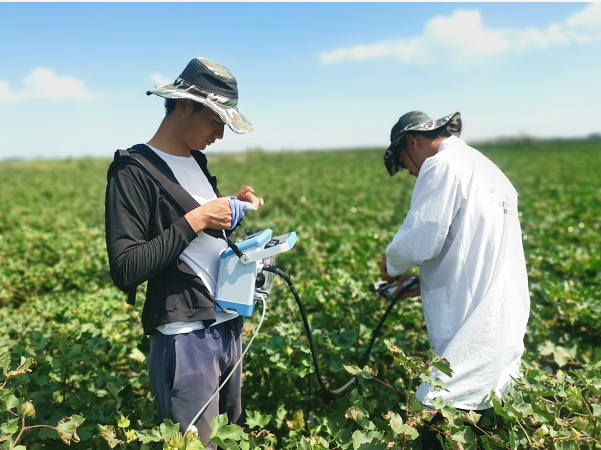
W2.2 在奥地利Scharfling
Partners from Czech Republic and Austria, members of W2.2, gathered from 25.8.-26.8.2020 and discussed further activities with respect to hydrological catchment modelling. The meeting took place in Scharfling, Austria.
The main issues explored were the calibration of the models SWAT and CASE in the different Austrian and Czech catchments and the selection of appropriate measures to reduce soil and water loss at this scale. A key point of discussion was on the possibilities to simulate effects of different groups of measures with the different models. No final conclusion has been made yet on which and how many measures could be simulated with our models, but the discussion has been started and will continue at the next SHui WP2 meeting.
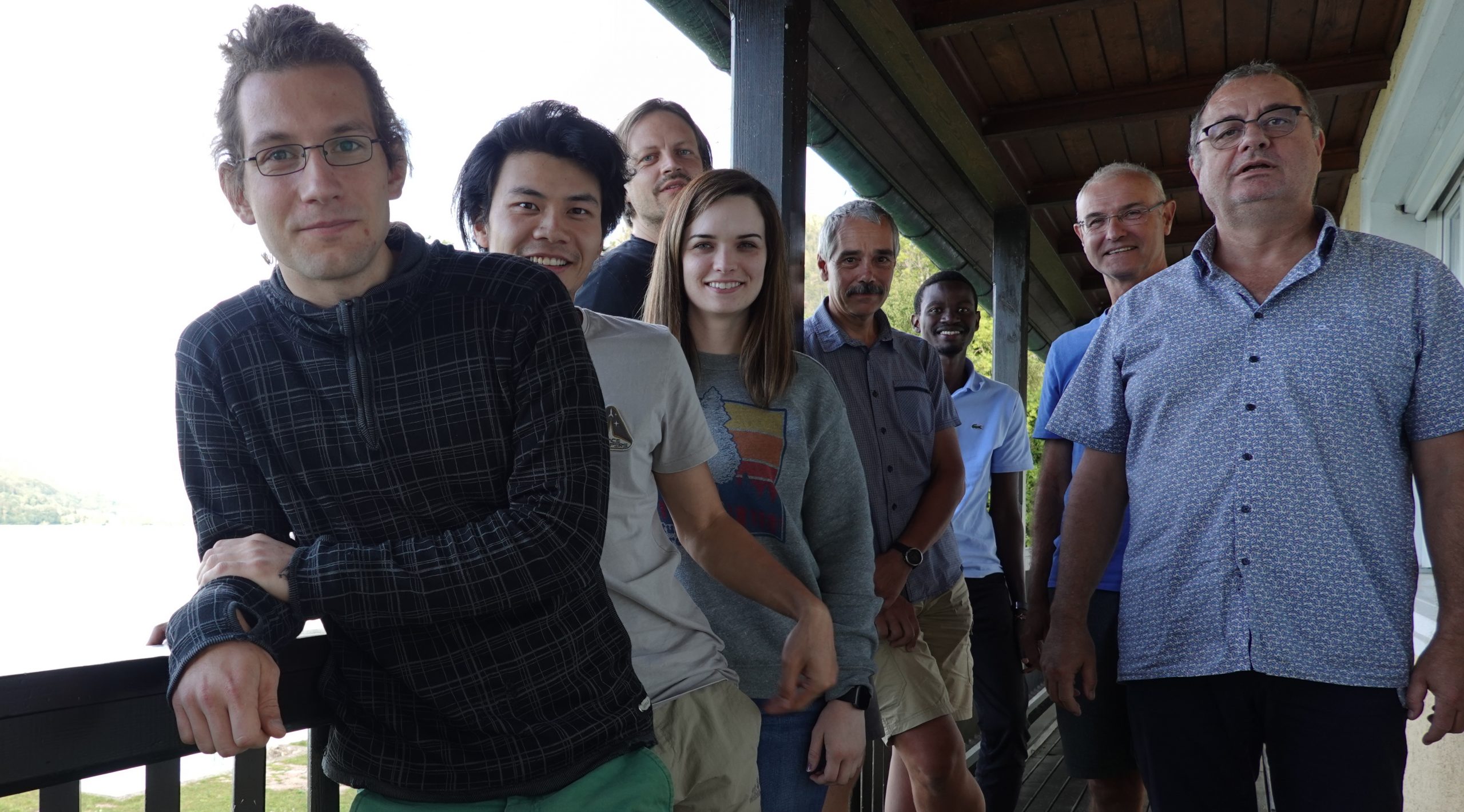
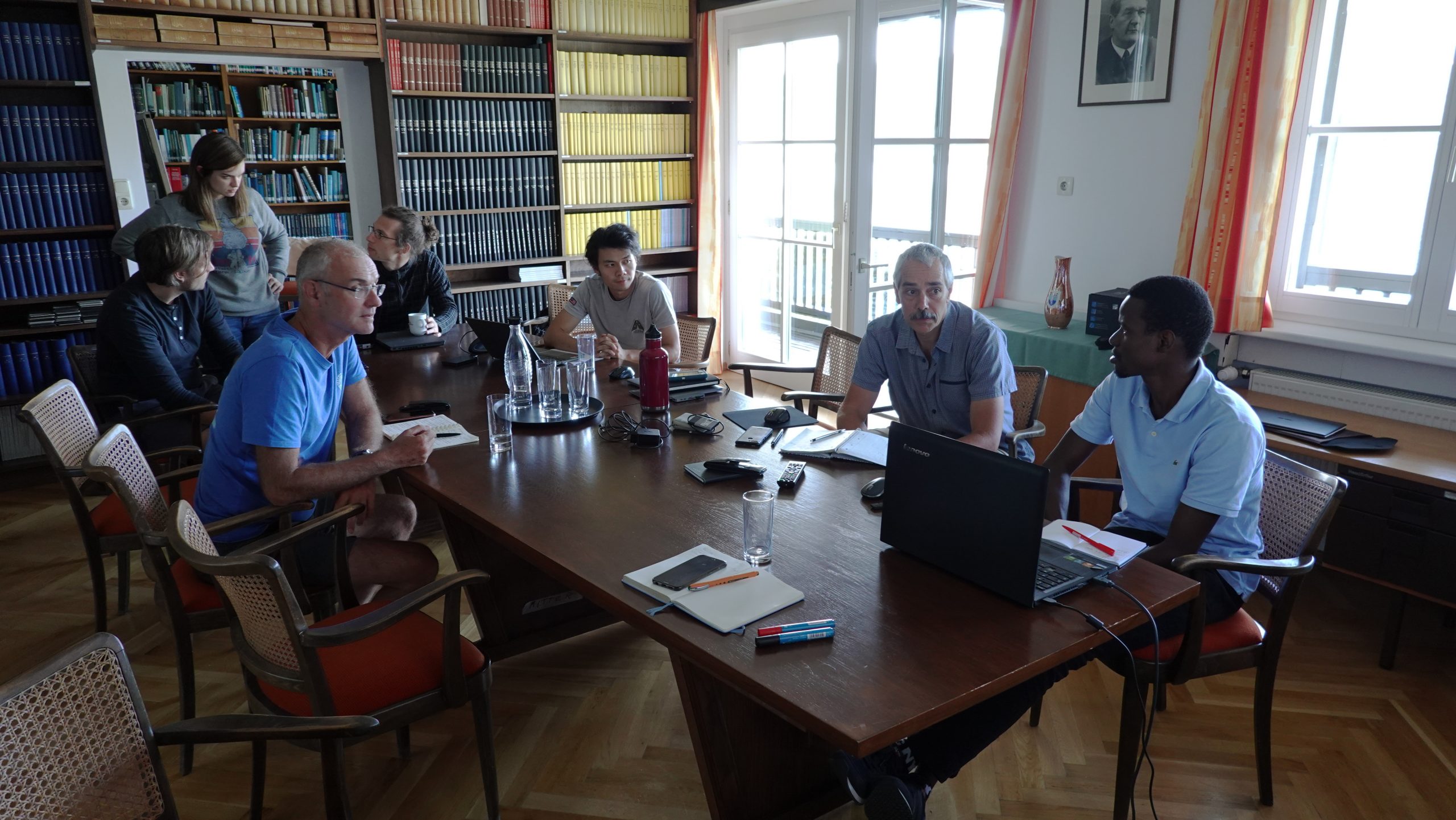
2020年7月举行第二次大会
SHui’s second General Assembly, organised by Beijing Normal University (BNU) and moderated by Professor Suhong Liu, took place from 20th to 23rd July 2020. The meeting was held via Zoom due to travelling restrictions and was attended by 36 individuals from IAS CSIC, CEBAS CSIC, ARO, BFU, BNU, BOKU, CAU, CVUT, FAFU, MEDES, KU-Leuven, NAU, TERRAVISION, UCO, UGOE, ULANC and Euro-Funding.
To avoid internet bandwidth problems disrupting communications, most sessions occurred with participants muted and not demonstrating their “lockdown haircuts”, but there was plenty of opportunities for interaction within a packed programme. From the number of references to prior and planned publications, it is clear that research progress is gaining pace even as the pandemic has forced us to be creative in engaging with stakeholders.
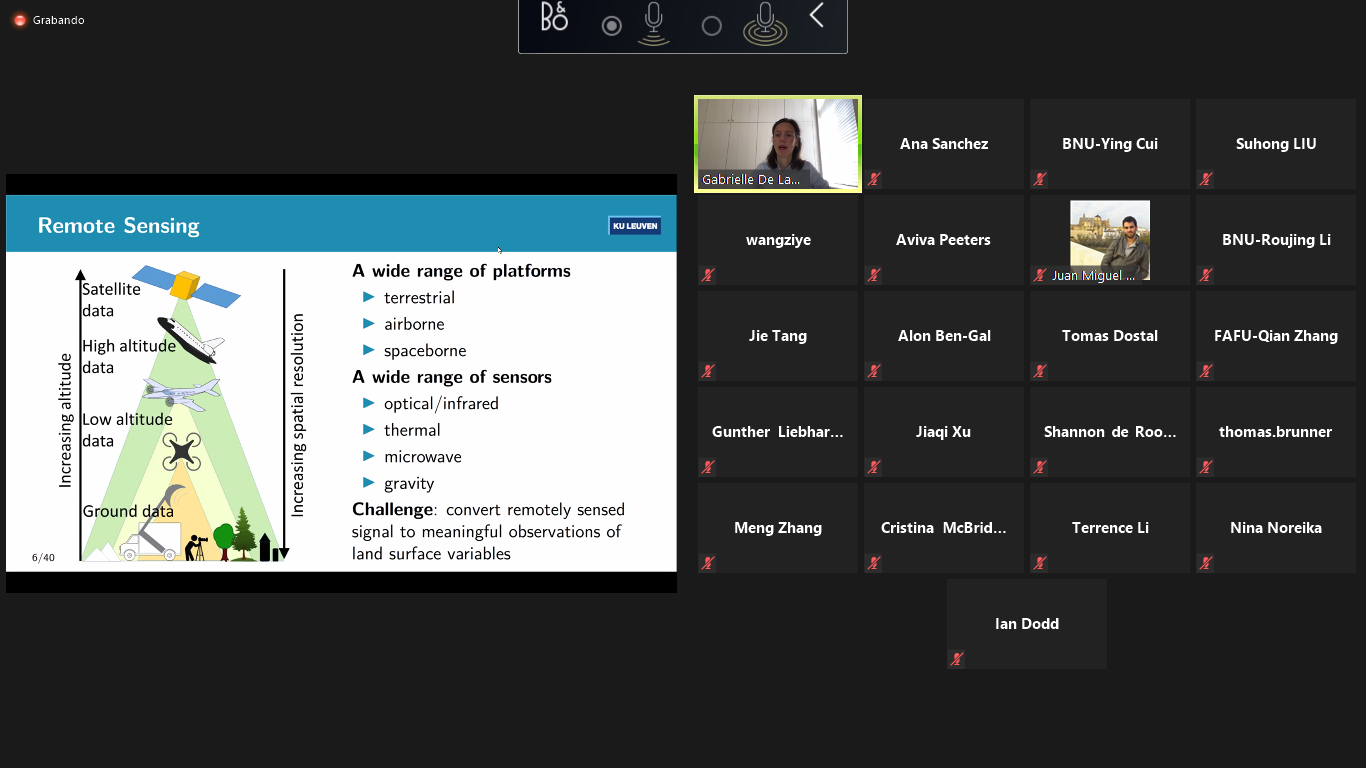
The first two days of the project were devoted to showing scientific results from all WPs and participants.
Two Early Career Training Events were held online: a remote sensing and GIS workshop on 22nd July 2020, integrated in the ‘Early Career Training Plan’, and an AquaCrop calibration and validation workshop on 20th-24th July 2020. Both events were attended by SHui’s ECRs, with the latter open to a wider international audience.
On the last day, the main activities planned for the coming year and their related objectives were presented, and the integration of results from different WPs was discussed. A photo contest has been created on the website to encourage the upload of images of equipment and experiments related to SHui, and a survey launched to choose the next meeting date.

